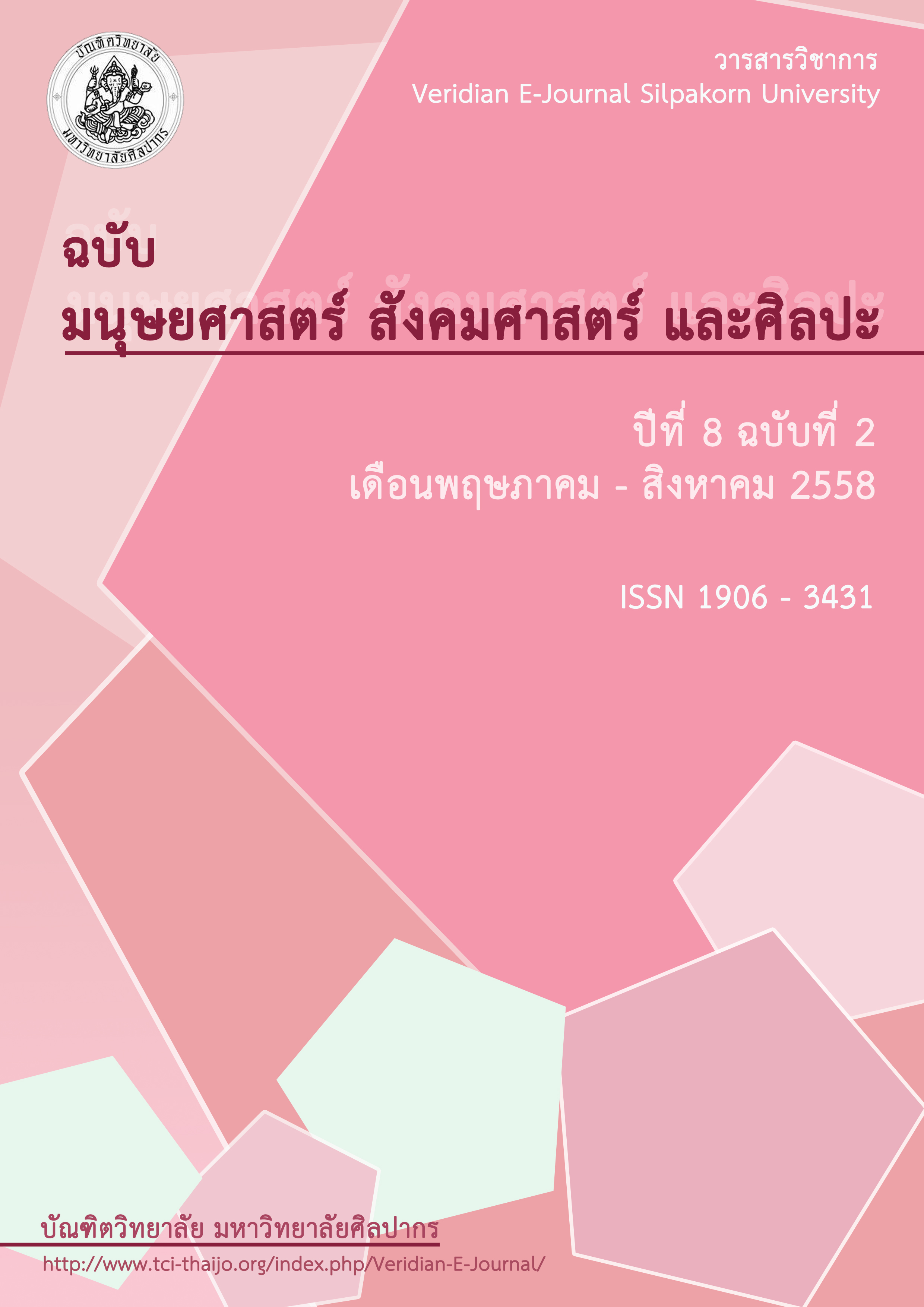การศึกษากระบวนการแก้ปัญหาอย่างสร้างสรรค์ เรื่อง อาหารกับสุขภาพ รายวิชาสุขศึกษา สำหรับนักเรียนชั้นมัธยมศึกษาปีที่ 3
Main Article Content
Abstract
บทคัดย่อ
การวิจัยในครั้งนี้เป็นการวิจัยเชิงทดลอง (Experimental Research) แบบ One Group Pretest-Posttest Design มีวัตถุประสงค์เพื่อ 1) เปรียบเทียบผลการเรียนรู้ เรื่อง อาหารกับสุขภาพ รายวิชาสุขศึกษา ของนักเรียนชั้นมัธยมศึกษาปีที่ 3 ก่อนและหลังการจัดการเรียนรู้การแก้ปัญหาอย่างสร้างสรรค์ 2) ศึกษากระบวนการแก้ปัญหาอย่างสร้างสรรค์ เรื่อง อาหารกับสุขภาพ รายวิชาสุขศึกษา ของนักเรียนชั้นมัธยมศึกษาปีที่ 3 หลังการจัดการเรียนรู้การแก้ปัญหาอย่างสร้างสรรค์ และ 3) ศึกษาความคิดเห็นของนักเรียนชั้นมัธยมศึกษาปีที่ 3 ที่มีต่อการจัดการเรียนรู้การแก้ปัญหาอย่างสร้างสรรค์ โดยมีกลุ่มตัวอย่างเป็นนักเรียนชั้นมัธยมศึกษาปีที่ 3/1 ภาคเรียนที่ 2 ปีการศึกษา 2557 ของโรงเรียนวัดราชบพิธ จำนวน 35 คน เครื่องมือที่ใช้ในการวิจัย ได้แก่ แผนการจัดการเรียนรู้การแก้ปัญหาอย่างสร้างสรรค์ แบบทดสอบวัดผลการเรียนรู้รายวิชาสุขศึกษา เรื่อง อาหารกับสุขภาพ แบบประเมินกระบวนการแก้ปัญหาอย่างสร้างสรรค์ และแบบสอบถามความคิดเห็นของนักเรียนที่มีต่อการจัดการเรียนรู้การแก้ปัญหาอย่างสร้างสรรค์ วิเคราะห์ข้อมูลด้วยการหาค่าเฉลี่ย () ส่วนเบี่ยงเบนมาตรฐาน (S.D.) และการทดสอบค่าที (t-test) แบบ Dependent
ผลการวิจัย พบว่า
1. ผลการเรียนรู้เรื่องอาหารกับสุขภาพ รายวิชาสุขศึกษา ของนักเรียนชั้นมัธยมศึกษาปีที่ 3 หลังการจัดการเรียนรู้การแก้ปัญหาอย่างสร้างสรรค์สูงกว่าก่อนการจัดการเรียนรู้การแก้ปัญหาอย่างสร้างสรรค์อย่างมีนัยสำคัญทางสถิติที่ระดับ .01
2. กระบวนการแก้ปัญหาอย่างสร้างสรรค์ เรื่องอาหารกับสุขภาพ รายวิชาสุขศึกษา ของนักเรียนชั้นมัธยมศึกษาปีที่ 3 ที่จัดการเรียนรู้การแก้ปัญหาอย่างสร้างสรรค์ หลังการจัดการเรียนรู้อยู่ในระดับมาก (=3.96, S.D.=0.48)
3. ความคิดเห็นของนักเรียนชั้นมัธยมศึกษาปีที่ 3 ที่มีต่อการจัดการเรียนรู้การแก้ปัญหาอย่างสร้างสรรค์ อยู่ในระดับเห็นด้วยมาก (=4.13, S.D.=0.41)
Abstract
The purposes of this experimental research with one group pretest - posttest design were 1) observing the significant differences between grade 9 students’ learning outcomes before creative problem solving process of food and health lesson in health education course employed in the classroom and those after process administered in the classroom. 2) examining the process (i.e. creative problem solving process of food and health lesson in health education course for grade 9 students) after the process was applied in the classroom. and 3) investigating grade 9 students’ attitudes towards the instruction in which the process was employed. In this study, 35 male grade 9 students studying at Wat Rajabopit School participated in the study. With regards to the instruments of the study, the lesson plans in which the process (i.e. creative problem solving process of food and health lesson in health education course for grade 9 students) was applied, the assessment test of the lesson (viz. food and health), the evaluation form of the creative problem solving process, and the questionnaire used to elicit the students’ attitudes towards the instruction utilized in this study. With the data obtained, they were analyzed by the following statistical fashions: means, standard deviation, and dependent t-test. The findings of the study indicated that
1. The learning outcomes after the process (i.e. creative problem solving process of food and health lesson in health education course for grade 9 students) applied were significantly higher than those before the process was employed (statistically in 0.1).
2. The ranges of creative problem solving process of food and health lesson in health education course for grade 9 students were also =3.96, S.D.=0.48.
3. The students’ attitudes towards the process applied in the instruction are in a positive way. In other words, the students’ agreement with the process application was =4.13, S.D.=0.41.
